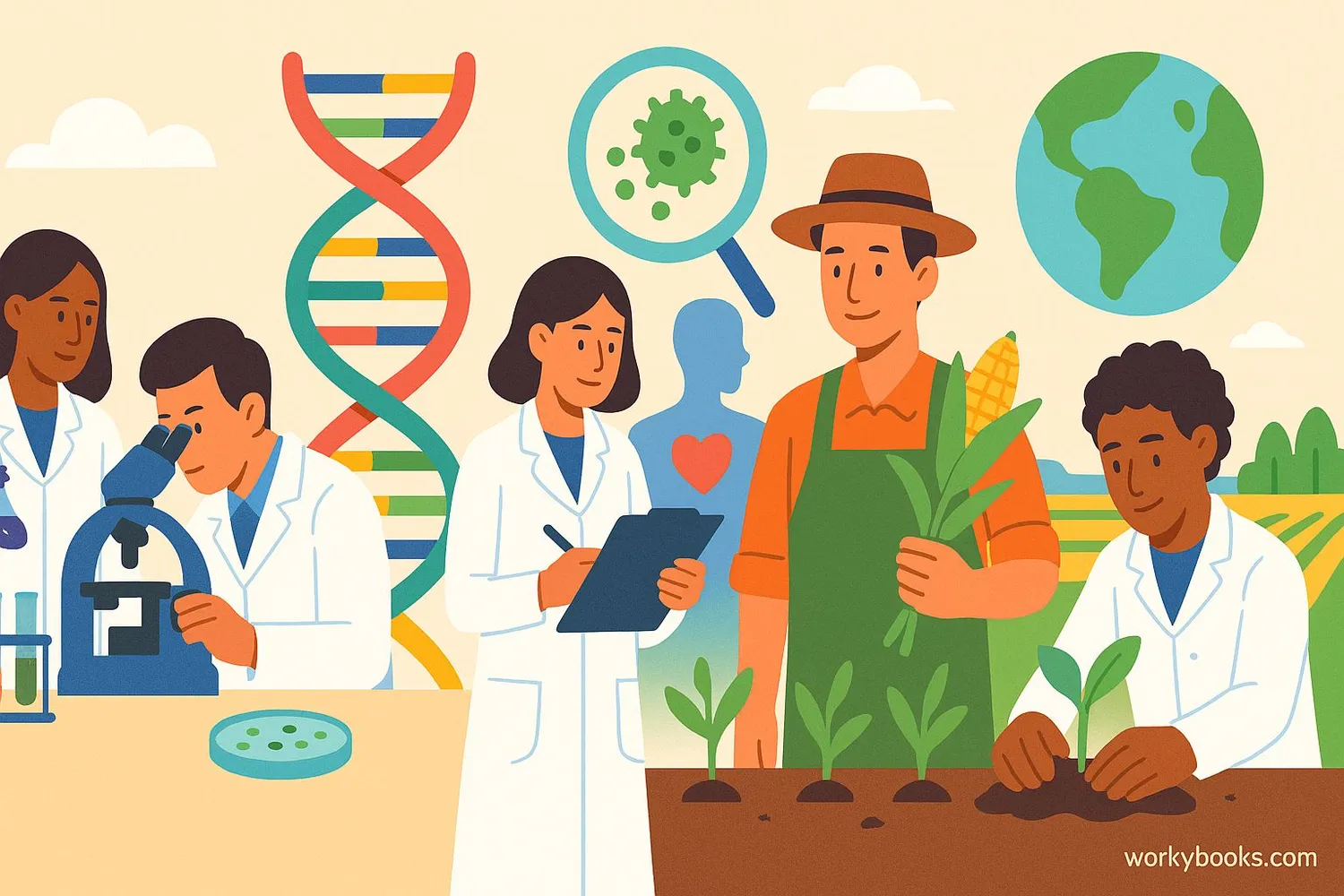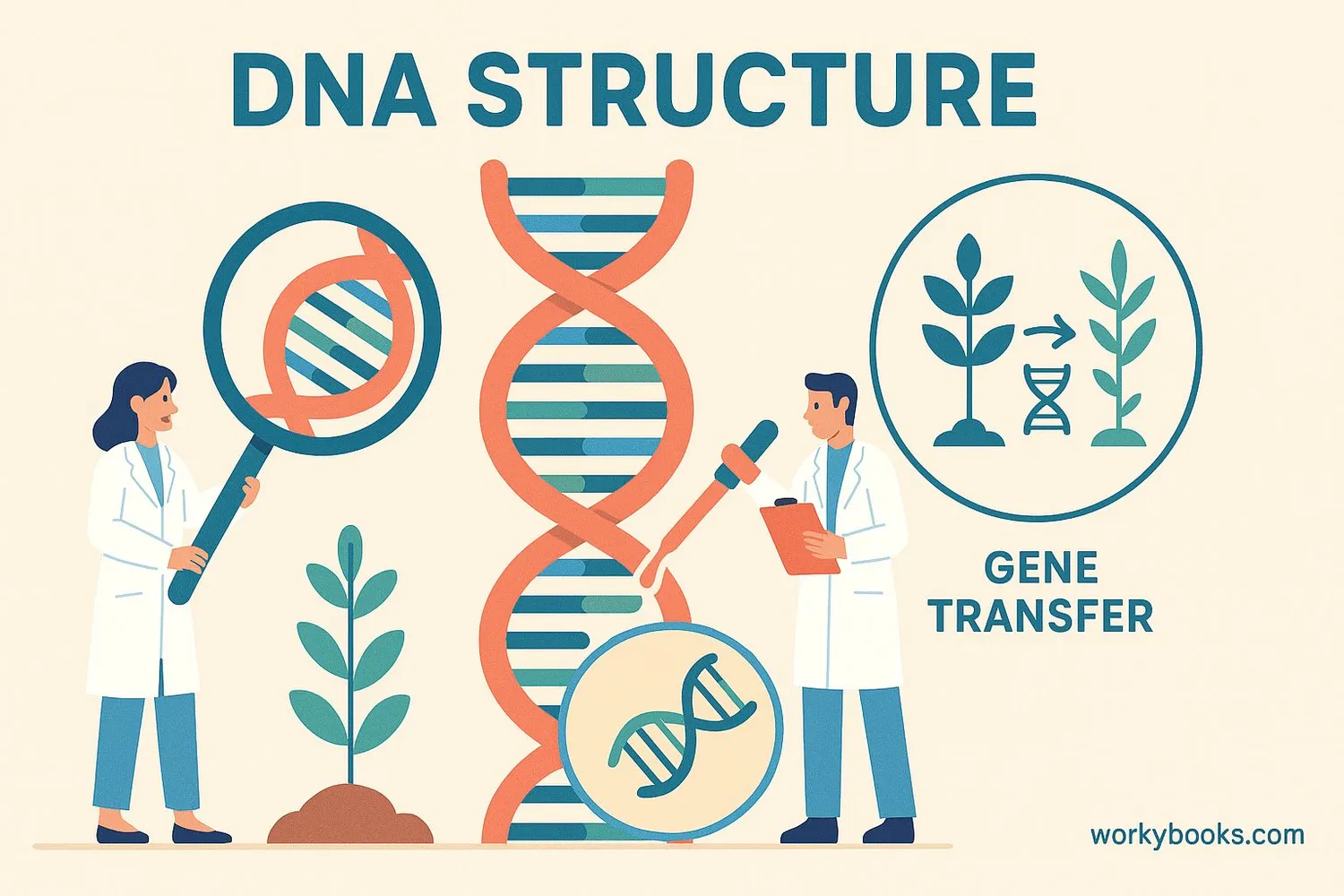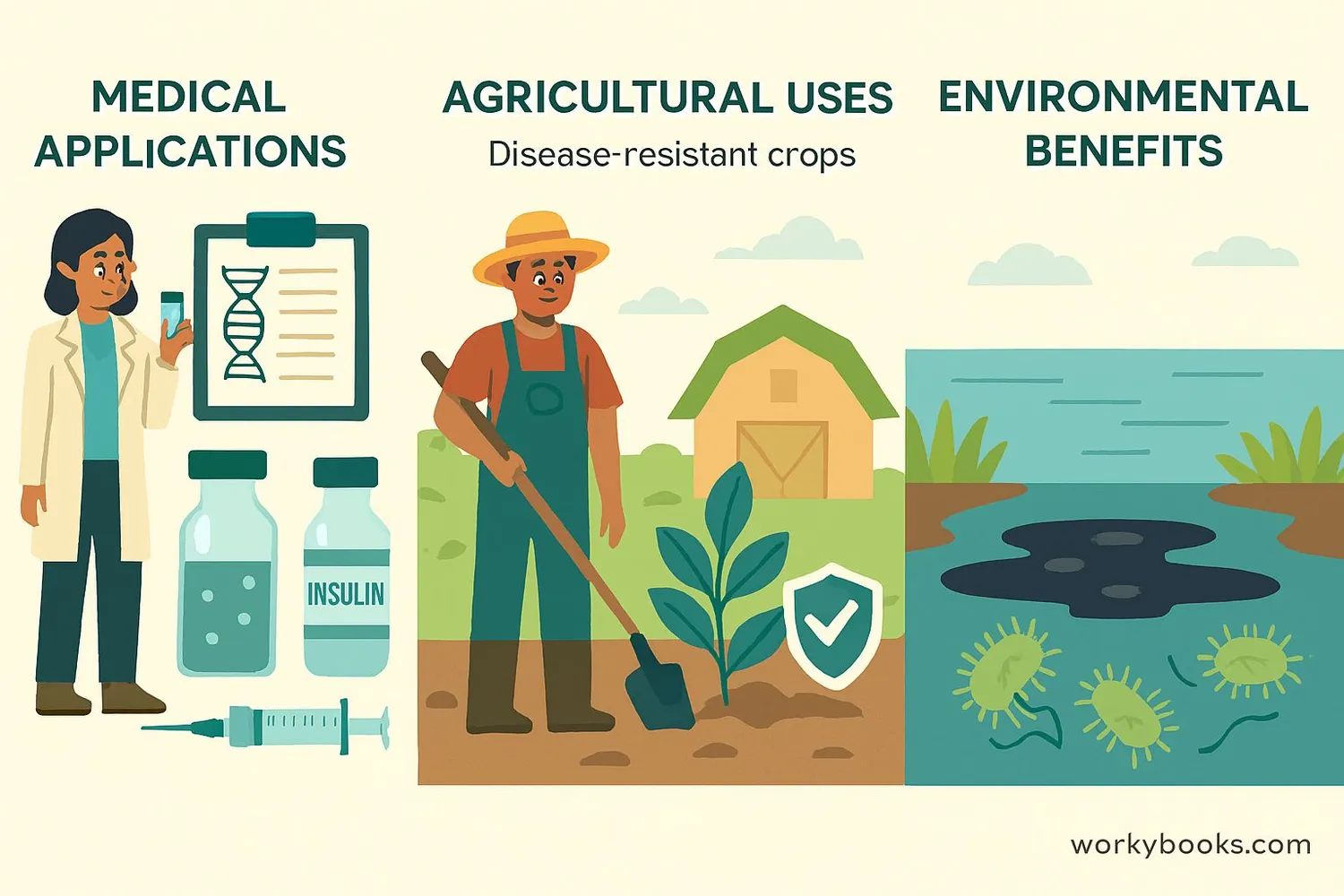Biotechnology - Definition, Examples, Quiz, FAQ, Trivia
Discover how scientists use living things to solve problems and improve our world!
What is Biotechnology?

Biotechnology is the use of living things to make useful products or solve problems! Scientists use cells, bacteria, and other tiny organisms to create medicines, improve crops, and even clean up pollution.
Think of biotechnology as using nature's tiny tools to help people. For example, we've used yeast (a tiny fungus) for thousands of years to make bread rise and create yogurt and cheese. Modern biotechnology uses more advanced tools like DNA editing to solve bigger challenges.
Biotechnology Fact!
The word "biotechnology" comes from "bio" meaning life and "technology" meaning using knowledge to solve problems!
How Biotechnology Works

Biotechnology works by understanding and using the instructions inside living things called DNA. DNA is like a recipe book that tells cells how to grow and function. Scientists can read these instructions (DNA sequencing) and even change them (genetic engineering) to help organisms do new things!
DNA Discovery
Scientists study an organism's DNA to understand its traits
Gene Identification
They find specific genes that control useful characteristics
Modification
Using tools like CRISPR, they carefully modify the DNA
Testing
The modified organism is tested to ensure it works safely
Application
The biotechnology solution is used to help people
Some important biotechnology tools include:
• Genetic engineering: Changing an organism's DNA
• CRISPR: A precise tool for editing genes
• Recombinant DNA: Combining DNA from different sources
• Bioinformatics: Using computers to study biological data
• Bioprocessing: Using living cells to make products
DNA Fact!
If you stretched out all the DNA in your body, it would reach to the sun and back over 300 times!
Biotechnology Applications

Biotechnology helps us in many areas of our lives! Here are some important applications:
Medical Biotechnology
Creating medicines, vaccines, and gene therapies to treat diseases
Agricultural Biotechnology
Developing crops that resist pests and grow in difficult conditions
Environmental Biotechnology
Using microorganisms to clean pollution and create renewable energy
Examples of biotechnology in action:
• Insulin production: Bacteria are engineered to make insulin for diabetics
• Golden Rice: Rice modified to contain Vitamin A to prevent blindness
• Bioremediation: Using bacteria to clean up oil spills
• Stem cell therapy: Using special cells to repair damaged tissues
• DNA fingerprinting: Using DNA to solve crimes and determine family relationships
Biotechnology Quiz
Test your biotechnology knowledge with this quiz! Answer all 5 questions to see how much you've learned.
Frequently Asked Questions
Here are answers to some common questions about biotechnology:
Fun Biotechnology Trivia
Discover some amazing facts about biotechnology!
DNA Discovery
The structure of DNA was discovered in 1953 by James Watson and Francis Crick with help from Rosalind Franklin. This discovery revolutionized biotechnology!
Medical Marvel
Before biotechnology, insulin for diabetics came from pigs and cows. Now, thanks to genetic engineering, we can produce human insulin using bacteria!
Food Improvement
Some papayas were saved from extinction by biotechnology! In the 1990s, a virus was destroying papaya crops in Hawaii until scientists developed a virus-resistant variety.
Environmental Helper
Certain bacteria have been genetically engineered to clean up toxic waste! These amazing microorganisms can break down harmful chemicals into safer substances.


